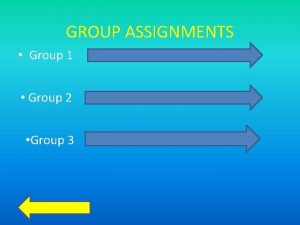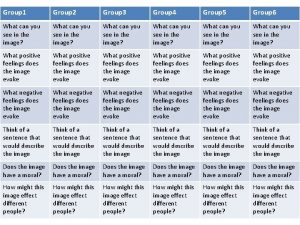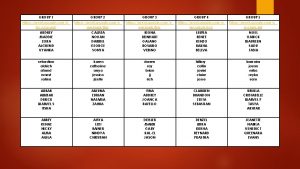COMPUTER NETWORK A computer network is a group










- Slides: 10


COMPUTER NETWORK A computer network is a group of computers connected to each other electronically (wireless or wired). This means that the computers can "talk" to each other and that every computer in the network can share data with the others. Data can take the form of videos, documents, pictures, data bases and so on. Reach and size are use to classify networks. • Reach the physical distance between the computers • Size the number of computers

TYPES OF COMPUTER NETWORKS LAN – Local Area Network • A LAN is two or more connected computers sharing certain resources in a relatively small geographic location, often in the same building. Examples include home networks and office networks. • Examples: School, small business and home. WAN – Wide Area Network • A WAN typically consists of two or more LANs. The computers are farther apart and are linked by telephone lines, dedicated telephone lines, or radio waves. The internet is the largest Wide Area Network (WAN) in existence. • Examples internet and finger print databases

THE INTERNET The internet is the largest computer network in the world, connecting millions of computers. A network is a group of two or more computer systems linked together.

THE WORLD WIDE WEB (WWW) When most people think of the internet, the first thing they think about is the World Wide Web. Nowadays, the terms "internet" and "World Wide Web" are often used interchangeably—but they're actually not the same thing. The internet is the physical network of computers all over the world. The World Wide Web is a virtual network of web sites connected by hyperlinks (or "links"). Web sites are stored on servers on the internet, so the World Wide Web is a part of the internet. The World Wide Web was created in 1989 by Tim Berners-Lee, a software engineer and went public in 1991. Before then, computers could communicate over the internet, but there were no web pages.

HTML The backbone of the World Wide Web is made of HTML files, which are specially-formatted documents that can contain links, as well as images and other media. All web browsers can read HTML files. In addition to HTML, it's also very common for websites to use technologies like CSS (Cascading Style Sheets) and Java. Script to do more advanced things. <html> <head> <title> Hello World </title> </head> <body>

URL / IP ADDRESS A URL (Uniform Resource Locator) is a distinct web address on the Internet for a web page, a PDF file or any other file format available. It is easy for humans to remember URLs but the computer cannot "understand" this format. For example, the URL of a web page may be www. xyz. com, and its IP address 123. 234. 108. 011. When you use the Web or send an e-mail message, you use a domain name to do it. For example, the Uniform Resource Locator (URL) "http: //www. howstuffworks. com" contains the domain name howstuffworks. com. So does this e-mail address: example@howstuffworks. com. Every time you use a domain name, you use the Internet's DNS servers to translate the human-readable domain name into the machine-readable IP address. Check out How Domain Name Servers Work for more in-depth information on DNS.

URL / IP ADDRESS http: //www. cars. com/trucks/index. html protoc ol domain name URL: www. cars. com IP ADDRESS: 74. 119. 98. 141 pathnam e filename

HOW IT WORKS

DID YOU KNOW? The foundation of the internet began in 1969, when the US Department of Defense created ARPAnet, a project to allow military personnel to communicate with each other in an emergency. By 2012, the number of internet users worldwide reached 2. 4 billion—about one third of the world's population. To store all of the information on the internet, you would need over 1 billion DVDs or 200 million Blu-ray discs. OBJECTIVE: Students will be able to decode and encode words and phrases, and understand the underlying makeup of a web page
 Network topologies
Network topologies Social facilitation example psychology
Social facilitation example psychology Within group variance vs between group
Within group variance vs between group Anova within group and between group
Anova within group and between group Voluntary group and involuntary group examples
Voluntary group and involuntary group examples Jrcptb
Jrcptb How to compare thermal stability of group 2 nitrates
How to compare thermal stability of group 2 nitrates Amino group and carboxyl group
Amino group and carboxyl group Amino group and carboxyl group
Amino group and carboxyl group In group out group
In group out group Group yourselves
Group yourselves



















